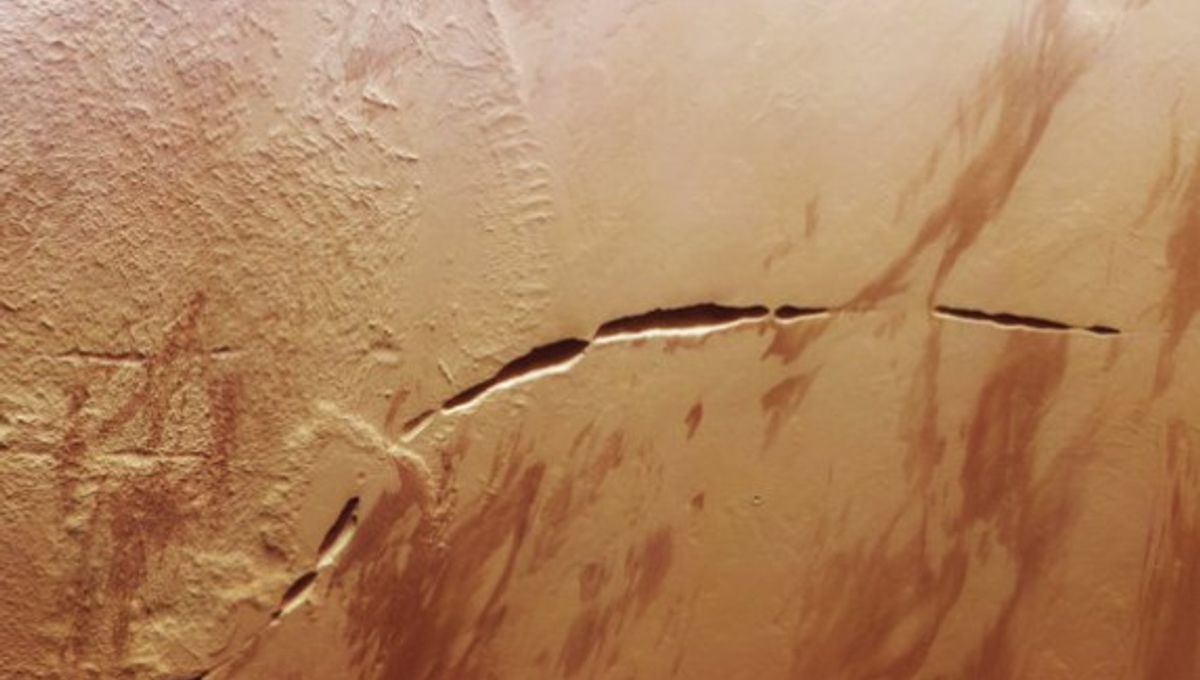A new image from a satellite orbiting Mars has revealed a striking canyon in unprecedented detail. The gnarled, scar-like canyon, known as Aganippe Fossa, was first spotted by astronomers nearly a century ago, but has now been seen up close for the first time.
At about 600 kilometers (373 miles) long from end to end, Aganippe Fossa is a colossal example of a graben, the name given to trench-like grooves with steep sides on both sides. For comparison, the Grand Canyon in the United States is 446 kilometers (277 miles) long, though our planet’s largest canyon – located beneath the Greenland ice sheet – trumps the Martian Rift Valley, at about 750 kilometers (460 miles) long.
The new image was taken by the European Space Agency’s Mars Express, which has been orbiting the Red Planet since 2003. It shows the curving, fractured canyon that carves its way through the Tharsis region, home to some of Mars’ largest and most iconic volcanoes.

This wider view shows the location of Aganippe Fossa in relation to the massive Martian volcanoes Asia Mons and Olympus Mons. Image Credit: NASA/MGS/MOLA Science Team
The nearest of these is Asia Mons, which is about nine kilometers (29,500 feet) high. Further north is the imposing figure of Olympus Mons, the highest volcano in the solar system at about 25 kilometers (82,000 feet) high.
According to ESA, it is still unclear how Aganippe Fossa formed. It may have been formed by magma flowing up from beneath Asia Mons, stretching and tearing the Martian surface millions of years ago.
As amazing as the canyon looks in these photos, it’s not nearly as impressive as Mars’ longest canyon, Valles Marineris. This impressive sight stretches an incredible 4,000 kilometers (2,500 miles) along the planet’s equator and is the largest canyon in the entire solar system.
